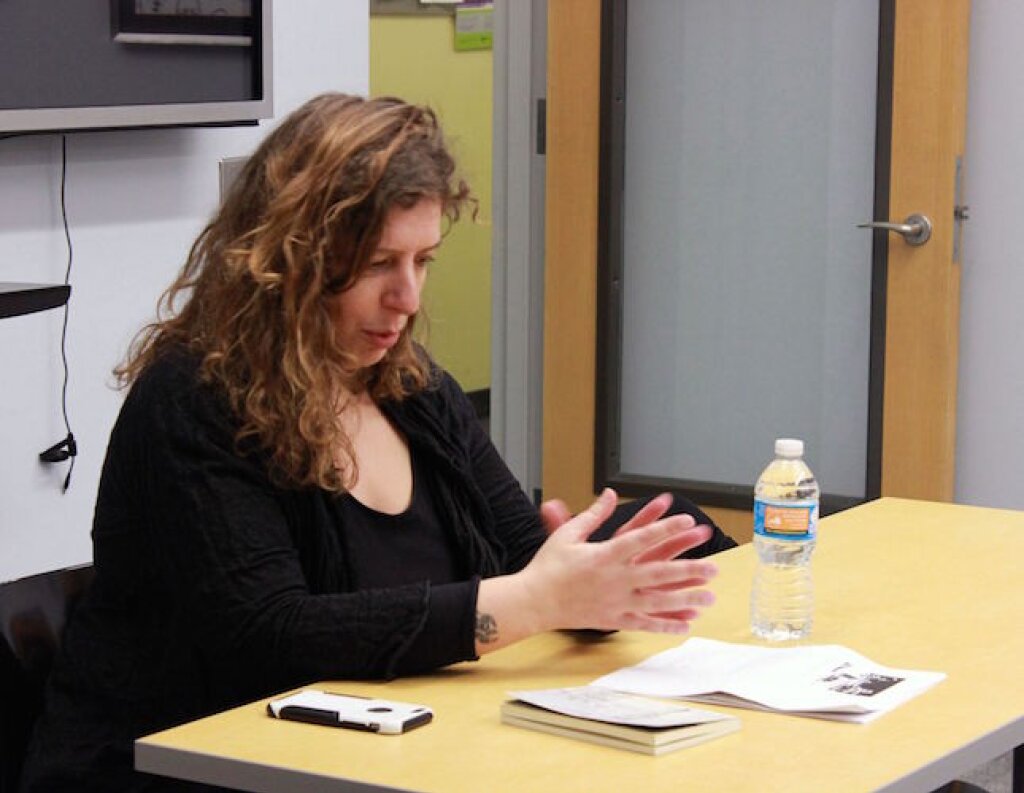Watch the video of the event here
On April 3, 2015, the NYU Jordan Center for the Advanced Study of Russia welcomed Russell Valentino – professor and chair of Slavic and East European Languages and Cultures at Indiana University – to speak about his latest monograph The Woman in the Window, published by Ohio University Press in October 2014. Valentino stated that the image of a woman in the window was ubiquitous in the books and films with which he has been working for many years. When writing about this trope, Valentino added, it is hard not to write about male fantasy.
With the European financial revolution of late 17th and early 18th centuries – the creation of the Bank of England, public and national debt, and replacement of land interests by money interests – the notion that a man’s virtues were found in property and land began “to give way to a more ambiguous conception of the self.” The establishment of a credit system was greeted by some as a potential improvement of well-being, while others saw it as the onset of corruption. A similar dual response, according to Valentino, can be traced to the onset of our present-day virtual culture.
Valentino pointed to the lack of virtue theory in the discourse on our digital and virtual world, which might be due to the outdated and overcharged nature of virtue theory. However, virtue theory and discourse have “seen a marked resurgence in the past 35 years.” Valentino believes that it is precisely the de-corporalization of our virtual culture that is responsible for the revival of the discourse on virtue. The parallels between the credit discourse of the 18th century and that of our virtual world is the point of departure of Valentino’s analysis.
The trope of the woman in the window is so old, Valentino said, that it is hard to talk of its origins. Traditionally, this ubiquitous trope presents a woman without any value and agency. But throughout 19th and 20th centuries the trope “got several facelifts.” How did she change at the age of modernity? What is she doing? In Valentino’s opinion, “she is an evocation of a masculine heroic ethos” that stands in opposition to a compromised and searching masculinity beginning with the age of modernity and the rise of commercialism.
As an illustration of this shift, Valentio spoke about Fedor Dostoevsky’s 1848 novel The Double where the author “concentrates the fantastical potential of commercial power in the mind of a single individual.” The protagonist’s toying with the idea of fashioning himself as prosperous leads to a doubling – a gradual acceptance of the mask (the social figure) as a substitute for the real identity. Dostoevsky then reveals the moral decay that arises with the rise of “modern commercial culture” and ways that it affects the transformation of the social and political life of an individual. How does Dostoevsky critique this new condition? Being in his early humanist period, he believed that a man afflicted by the commercialism of modernity loses his soul, and cannot experience the greater depths and meanings of life that the pre modern predecessors could enjoy. It is “an impoverishment of his humanity” and a loss of heroism. The loss of the chivalric mode is signaled by the trope of the woman in the window. As Golyadkin looks up to the window, anticipating his beloved to meet his gaze, he meets a “purely public gaze” that strips the protagonist’s aspirations of “idealist veneer.”
Traditionally the virtuous and heroic man is seen as a strong, non-divided character. In modernity, this idea of virtue begins to clash with the norms of commercial, bureaucratic functionalism. For example, Levin, in Leo Tolstoy’s Anna Karenina, is a character who longs for constancy, purity, and lust for life under the changing circumstances in society. It is the woman in the window – Kitty – that anchors Levin’s desires amidst the external pressures.
Yet, Valentino continued, “getting the girl” does not stop the male characters from longing for something more. After his marriage, Levin, like Prince Bolkonsky in War and Peace, is “faced with a problem of bourgeois happiness.” The bourgeois life conflicts with the man’s intentions that are of heroic nature; the domestic life threatens the hero with a mundane and unheroic existence.
While for 19th-century authors, the woman in the window signified an anchor of the disintegrating heroic ethos, 20th century writers laid bare the trope, pointing to its artificiality. For instance, Nabokov reveals the tragedy of this trope when depicting Humbert Humbert observing Lolita from inside the room rather than from outside her window, which he describes as looking at her “through the wrong end of the telescope.” In Valentino’s view, Nabokov was laying bare the device of the trope and asking what it means for our society to look at the woman through the wrong end of the telescope – when spying on a woman from inside her room is “no longer perverse, but utterly mundane.” Therefore, Nabokov uses the trope to question the position of the viewer and, subsequently, the reader. Humbert Humbert’s “wrong” point of view implicates us as well: “We see her, think of her only through his depiction.”
The question and answer period addressed the various types of self-interest in Russian literature, especially how Levin’s self-interest is presented as a positive trait. Cristina Vatulescu – a professor in NYU’s Comparative Literature Department – wondered about the connection of the trope and its possible shifts with the appearance of a film camera. Valentino stated that the desire to depict public viewing of a private life was prevalent in the literature of the late 19th and early 20th centuries, and the camera could be seen as an extension of that exploration. Finally, Valentino made an important remark that for the Russian aristocracy of the 19th century, it was extremely difficult to engage with the advent of commerce. While outside of Russia the mixing of art and money was already accepted as a norm for almost a century, the Russian gentry continued struggling with this conflict into the 20th century: the ubiquity of “the woman in the window” in Russian literature then, reveals the longing for anchoring the dissipating heroic values of the past.



